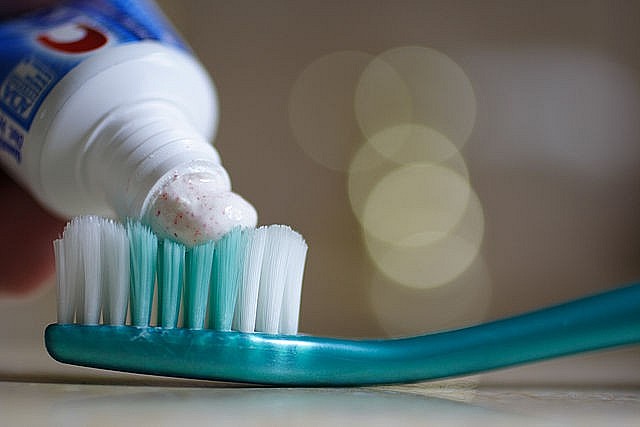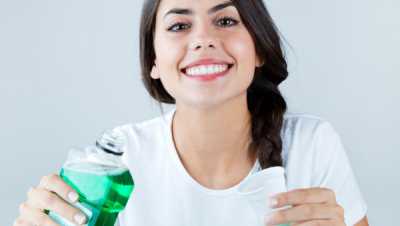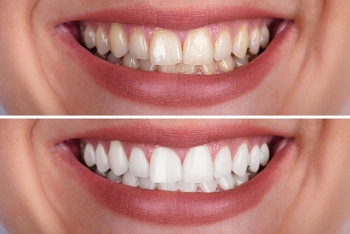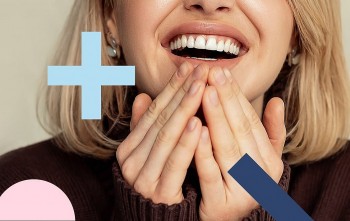10 Most Toxic Ingredients In Toothpaste You Should Avoid
It's difficult to accept that a substance we use on a daily basis (ideally twice a day as advised) could be detrimental to our general health. It's shocking to learn that some toothpaste brands have dangerous compounds we should stay away from. We've compiled a list of 10 substances you should steer clear of when buying toothpaste to make your life easier.
To what extent is toothpaste toxic?
Toothpaste is shockingly harmful for something that 69 percent of individuals use in their mouths at least twice a day. Many of the components in regular toothpaste are unsafe, even if it is good at preventing cavities, eliminating plaque buildup, and reducing gum irritation.
When a parent calls Poison Control, it's usually because their child has accidentally swallowed or eaten toothpaste. Fluoride-containing toothpaste can cause low-grade gastrointestinal symptoms such as nausea, vomiting, diarrhea, and other symptoms.
The toxicity of toothpaste isn't high enough to cause death if you unintentionally ingest a small amount while brushing. The majority of conventional toothpaste is prepared with fluoride and other chemicals in such little quantities that you won't notice any unsettling side effects right away. On the other hand, you can suffer from weakness, vomiting, diarrhea, convulsions, shocks, tremors, stomach discomfort, intestinal blockages, breathing difficulties, and even a heart attack if you consume or swallow the whole toothpaste tube. In the event that this occurs, call Poison Control at 1-800-222-1222 right away.
Even though the majority of us won't swallow the entire tube of paste, the toxins in toothpaste can still irritate the mouth over time. Additionally, since the mouth has a major impact on the body's general health—read up on the mouth-body connection—poor oral hygiene and health can lead to other health problems. These include osteoporosis, prostate cancer, bacterial pneumonia, breast cancer, cardiovascular disease, dementia, diabetes, and unexplained weight gain.
 |
| Top 10 Most Toxic Ingredients In Toothpaste You Should Avoid |
READ MORE: Removing Moles By Toothpaste: Is It Really Safe?
Top 10 Most Toxic Ingredients In Toothpaste You Should Avoid
1. Artificial Sweeteners
The effects of artificial sweeteners (such saccharin and aspartame) on the body are now the subject of conflicting and contradictory research.
Saccharin has previously been connected to lymphoma, brain tumors, and bladder cancer. Nevertheless, there hasn't been any solid proof to back up these assertions as of yet.
Conversely, aspartame has been connected to insulin resistance due to its effects on gut flora and elevation of blood glucose levels (9).
It is preferable to move to natural sugar substitutes like honey and stevia leaves while research is still ongoing.
2. Triclosan
Triclosan is a chemical that is present in body wash, toothpaste, cosmetics, and antibacterial soaps.
The Food and Drug Administration (FDA) reports that certain thyroid hormones have decreased as a result of a study. On the other hand, no substantial information regarding the study's effects on humans is yet available.
Thyroid hormones aid in maintaining and regulating your metabolism. A sluggish metabolism could be the outcome of such hormone declines.
Numerous research have also looked into the connection between triclosan, antibiotic resistance, and the risk of getting skin cancer. It is troubling that no conclusion has been reached from these investigations yet.
It might be advisable to stay away from triclosan in your toothpaste given the amount of uncertainty that surrounds this component.
| Do you know...? Many varieties of toothpaste contain the organic chemical pesticide triclosan, which is used for its antibacterial qualities to help prevent gum disease and infections. The issue with this component is that it is made similarly to the majority of harmful substances found in the environment. It has been connected to thyroid problems and may lead to antibiotic resistance. Therefore, toothpaste containing it cannot be safe. |
3. SLS, or sodium lauryl sulphate
Sodium Lauryl Sulphate might exacerbate phthous ulcers and irritate skin.
In a pilot study conducted over a 3-month period by the Department of Oral Surgery and Oral Medicine, individuals who used a paste containing SLS experienced a substantial increase in ulcers following the experiment. Conversely, there was a significant decrease in the quantity of ulcers when the patients moved to a paste free of SLS.
Therefore, using toothpaste containing SLS on your gums may cause inflammation. Additionally, this can make mouth ulcer sufferers' symptoms even worse. It might be advisable to stay away from SLS in toothpaste because of this.
4. Teeth Whiteners and Baking Soda
There are chemicals in toothpaste that help whiten teeth. The majority of us prefer to have bright, healthy-looking teeth, and whitening brands are widely available from manufacturers. Both sodium hexametaphosphate and hydrogen peroxide are possible teeth-whitening ingredients in toothpaste.
These two components are substances that make teeth appear whiter. It's generally accepted that the trace amounts of chemicals included in toothpaste are safe for people to use. Use your own discretion as some persons may find polyphosphates irritating.
Many people believe that baking soda, also known as sodium bicarbonate, is an excellent natural tooth whitener.
Baking soda is an ingredient in many toothpaste brands, and using it is completely safe.
5. Fluorine
What it is: A substance called fluoride is applied to teeth to help with remineralization.
Why it's bad: The FDA issues warnings for all goods containing fluoride for a reason. The Fluoride Action Network states that acute poisoning, which initially manifests as nausea, vomiting, and headaches, can result from even minute levels of fluoride. The fact that no over-the-counter toothpaste mix includes enough fluoride to genuinely remineralize teeth and that manufacturers are prohibited from adding more due to FDA regulations is perhaps the most startling piece of fluoride-related knowledge.
Since young children frequently swallow toothpaste, which can result in fluorosis and other issues, excessive fluoride can harm their developing teeth. Additionally, for topical fluoride applications to work, the teeth must be painted after brushing in order to allow the fluoride to be absorbed and the biofilm to be removed.
Does toothpaste contain harmful fluoride?Because fluoride can lower the incidence of cavities and tooth decay, it is added to the majority of conventional toothpastes, mouthwashes, and dental care supplements. Many people feel that the small quantity of fluoride found in toothpaste is not worth the risk, even though studies have shown that fluoride can help strengthen and maintain healthier teeth and gums. Depending on the amount consumed, fluoride toxicity can eventually result, making our youngest teeth-brushers the most susceptible. (A youngster can be adversely affected by fluoride far less than an adult would.) Actually, children under six years old accounted for 80% of cases of fluoride poisoning that were documented. |
6. Parabens
What they are: Chemicals called parabens are added to toothpaste as preservatives to increase its shelf life.
Why it's bad: Published studies on the safety of parabens are currently being reviewed and assessed by the FDA. The majority of cosmetic products and even most grocery items include parabens, which are known to interfere with hormones. Even though the amounts in each of these goods are deemed "safe," the buildup in our systems may result in issues, such as an elevated risk of breast cancer.
7. Saccharin (Sodium saccharin)
Saccharin – or sodium saccharin – is another type of artificial sweetener that is added to toothpaste to make it taste better. This chemical has been identified as a carcinogen in a study done on rats and mice, whose risk of bladder cancer increased when given saccharin. Exposure to saccharin also resulted in the growth of brain tumors and lymphoma in mice and rats.
8. Propylene Glycol
What it is: A synthetic chemical compound used as a surfactant is called propylene glycol.
Why it is detrimental: Despite being considered GRAS (generally recognized as safe) by the FDA, propylene glycol is known to irritate mucous membranes, the skin, eyes, and lungs. As an illustration, consider the industrial-grade version found in paint, detergent solvents, and antifreeze. The authors of a 2013 study recommended limiting the intake of propylene glycol and artificial colors, particularly for children, due to research demonstrating the harmful effects of the substance on rats after prolonged use.
9. Cocamidopropyl betaine
As an emulsifier and thickening, cocamidopropyl betaine has the potential to cause skin sensitivity and is considered an eco-toxin—a chemical that is recognized to be harmful to the environment.
Although cocamidopropyl betaine is generally regarded as harmless, its detrimental effects on the environment may make you wish to avoid using it.
READ MORE: Tips to Treat Dark Lips with Toothpaste
10. Diethanolamine (DEA)
Diethanolamine (DEA) is a hormone disruptor that is added to toothpaste to increase its foaming power. As a human respiratory toxin, irritant, and carcinogen, the EWG ranks it a ten. Cosmetics containing DEA are prohibited in Canada as well, raising the question of why the US has not followed suit.
Maintaining Good Dental and Physical HealthPay attention to the components when choosing the best toothpaste and trying to avoid tooth decay. Owning up to your behaviors is always preferable when it comes to self-care. After you've done the homework, you're the best judge of what's best for yourself. Seeking as much professional advice as you can is crucial when choosing a toothpaste. You will be in a much better position to make a decision after you have all the information. You'll enjoy brushing more if your toothpaste makes you happy! The majority of commercial and organic toothpaste available is safe to use and will actively contribute to maintaining the health of your teeth. Maintaining good oral health has several advantages. A smile can have virtually infinite power. Brushing consistently is the best course of action, regardless of your goals—be they to find the best whitening toothpaste or to maintain healthy gums. |
Give Natural Toothpaste a TryHerbs like mint, which naturally refresh teeth, are used to make natural toothpaste. Designed to act as teeth-cleaning soap, they remove dirt softly and without the use of harsh or dangerous chemicals. When opposed to regular toothpaste that is loaded with chemicals, natural toothpaste is one of the greatest and healthiest options. The majority of us also make an effort to limit the number of chemicals we encounter on a daily basis. However, you may significantly lower the quantity of unwelcome toxins that accumulate in your mouth and body on a daily basis just by switching out your toothpaste. |
In summary
Numerous harmful compounds included in toothpaste have the potential to harm development, irritate the skin, eyes, and lungs, and even cause cancer.
Use Happy! to brush your teeth instead of standard toothpaste, which contains harmful ingredients. Happy! is safe, environmentally friendly, and healthy for you.
 Simple Ways to Clean your Teeth for a Healthy Mouth Simple Ways to Clean your Teeth for a Healthy Mouth Even if you are brushing your teeth three times every day, you might be neglecting your gums. Do you know some useful tips to take ... |
 Teeth Stains: How to Remove and Prevent Teeth Stains: How to Remove and Prevent Most people struggle with teeth stains, caused by many factors including poor dental hygiene, smoking cigarettes, and drinking coffee, among others. |
 How Many Teeth Do You Have: Children and Adults How Many Teeth Do You Have: Children and Adults The purpose of teeth, which are hard appendages in the oral cavity, is to bite, chew, and tear food. Teeth are additionally linked to charm ... |



























